Burgers off but big band is back
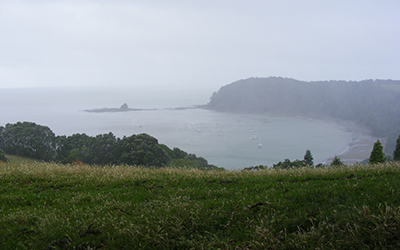
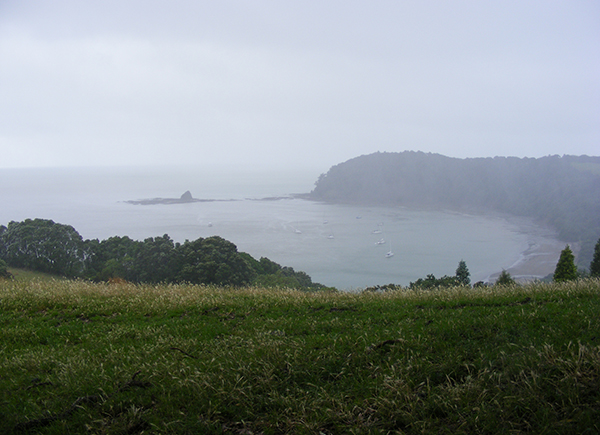
Wilma Withers Attendance: Rather than 90 or more yachts apiece in every major bay in the harbour, ex-tropical cyclone Wilma reduced numbers to those who had sailed to Mahurangi in the days before the storm struck. This was the first regatta to be cancelled since the Mahurangi Cruising Club became race organiser, in 1990. image Cimino Cole
In 2011 it was Cyclone Wilma. In respect to this summer’s tropical cyclones, the National Institute of Water and Atmospheric Research reports that meteorological forecasting centres are predicting:
…near average or slightly above average numbers for many islands [are] likely, and increased activity in the late season near Tonga and Niue.
Late in the November-to-April cyclone season is good—at least in respect to the end-of-January regatta and the average ‘at least one’ ex-tropical cyclone per season that impacts Aotearoa.
In 2012 it was the lack of either funding or underwriting that scuttled the Mahurangi Regatta marquee and big band after-match function. In the event, a combination of westerly winds and
In 2013, however, thanks to a $5000 grant from the Rodney Local Board, and cyclones permitting, the marquee and band will be back to continue the tradition of the Mahurangi Regatta prize-giving dance that was revived in 2004.
Strictly speaking, the dance was revived in 2005, given that 2004 was the Mahurangi Regatta Ball, held to commemorate the 150th anniversary of the founding of Warkworth. With its calendar of celebrations, Warkworth had jumped the gun by a year. But because the Mahurangi Regatta Ball was the grand finale of four months of events, it was only a few months shy of the sesquicentennial of quarter-acre lots going on the market, for £6–15 apiece. As Ron Locker writes in Jade River : A History of the Mahurangi, land agents, when describing the Mahurangi, excelled even today’s in their use of hyperbole:
…its fertile and majestically timbered lands; its splendid Agricultural and Grazing capabilities; its fine Harbour; its rich possession of Nature’s scenic grandeur; its numerous respectable settlers; and indeed its almost innumerable recommendations…
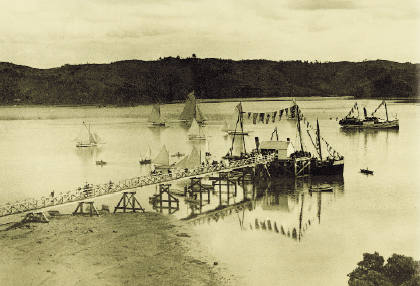
110 Years Before Wilma: Henry Winkelmann’s 1901 image is possibly the earliest in existence of a Mahurangi Regatta, which by then had been held, off and on, for at least 43 years. photographer Henry Winkelmann
Tantalisingly, it is not known whether the regatta pre– or post– dates the founding of town, in 1854, only that Warkworth farmer Joseph Gard’s diary records that a regatta was underway as he returned home from Auckland, on New Year’s Day, 1858. The regatta was, however, a more or less annual event until being suspended during World War II. Mahurangi people supplied the hospitality and some of the competition, but city ‘yachtmen’ then, as today, accounted for the bulk of the competing craft. In 1977 predecessor of Mahurangi Action, Friends of the Mahurangi, was responsible for the regatta’s revival, and for this year’s application to the Rodney Local Board.
The funding application required an estimate to be made of the percentage of participants from each of the 21 local boards. This highlighted rather sharply the probability that about 75% are from areas other than Rodney. This means that unless the council-controlled events organisation can also be persuaded to stump up, the Rodney board might prove to be reluctant to repeat its generosity year upon year. There are of course alternative means of funding an after-match function. One would be to include the cost, which is a little under $10 000, in the regatta racing entry fees. But aside from the Mahurangi Cruising Club being famously determined to be have the most affordable membership and racing fees in the game, the open and inclusive nature of the regatta would instantly evaporate. But so to would the regional parks venue. A core value of the parks is that that are open to everyone. While there are areas in some parks that may be booked by specific parties, the regatta monopolises Sullivans Bay during the day and Scotts Landing in the evening, which means that the parks would effectively be closed to the public, if the event failed to embrace all comers and without charge.
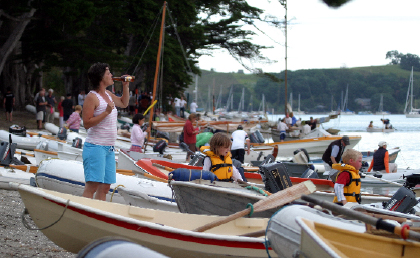
Sailors Sufficiently Thirsty: While running a cash bar helped pay for the prize-giving dance, regatta goers are already sufficiently thirsty without being plied with more by event organisers. And while the venison burgers were very popular, press-ganging sufficient galley slaves to churn out the nearly 1000 needed has proved unsustainable—this regatta, barbecues will be provided for crews to cook their own. image Max Cumming, 2006
In its determination to revive the prize-giving dance, Mahurangi Action, until cyclone Wilma, operated a cash bar and burger service, which raised most of the funds needed for the event. But there were two downsides: The number of galley slaves needed to avoid long cues was unsustainable—after years of selfless service locals wanted at turn at simply enjoying the socialising and dancing; and the need to push alcohol sales conflicted with the organiser’s civic responsibilities, amongst other things, to strive to make the event as family-friendly as possible. And subsequent bottle recycling confirmed that many crews were bringing their own high-end or supermarket-sourced wine, to the detriment of bar proceeds with which to pay for the marquee and band.
Last regatta, the decision was taken to not supply food and drink and to rely on regatta goers to give generously to make up for the loss of income. Then, with the weather forecast suggesting that numbers might be well down, the decision was made to cancel the marquee and band, rather than face losses that could threaten the future of the event. There was disappointment, of course, and inevitably, despite the ‘bring-your-own’ message going to all the clubs involved, folk arrived ashore unaware there were no venison burgers on sale. One stalwart local leaped into the breech, bringing extra barbecues and food. The challenge now is to get out a two-part message, that the band is back but the burgers are bring-your-own without only the first part registering. One obvious means of communicating the bring-your-own message will be to emphasise that a record number of barbecues will be being provided.
From time to time it is suggested that an alternative to the swing band that has played since 2004 should be considered. There are, however, powerful reasons to stick with the regulars. One is loyalty. At the time a musician friend of the Mahurangi suggested the Prohibition Big Band, in which of colleague of his played, organisers of the Mahurangi Regatta Ball where desperate. A swing band was a given, given the 1940s theme, which was a salute to the era in which the prize-giving and dance had last been held. But short of paying $10 000 for a high-profile big band, the only other band that had been located was just not considered up to the occasion. The Prohibition Big Band, conducted by Professor Trevor Thwaites of the University of Auckland, who then went by the relatively comprehensible title of head of school of visual and creative arts and deputy-head of arts, languages and literacies, would play for costs, then of about $500.
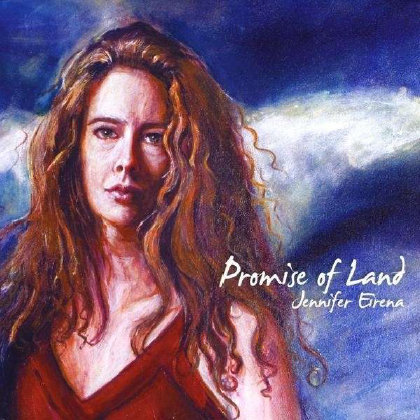
Promise of Band: The Swing-era Prohibition Big Band, including regular vocalist, and local, Jennifer Eirena, is booked to return to the Mahurangi Regatta prize-giving and dance at Scotts Landing, where it has magnificently performed since 2005, figuratively for a song.
Given the timeless setting of Scotts Landing, and the pre-1955 design rule for the prestigious Mahurangi Cup event, the swing-era big band is a nice aesthetic fit. But because it is essentially an acoustic band, albeit microphoned and moderately amplified, it is a good fit with park policy. A nice final touch is that a couple of the musicians are locals, including vocalist Jennifer Eirena.
The band and the ball were so greatly enjoyed that the overwhelming consensus was that it must be an annual event. There were, however, two related issues with that sentiment. The first and most critical was that the regional parks management signalled that its policy for the park prohibited its use for exclusive use by large parties. The other was that the essence of the regatta had always been its hospitality; to exclude visitors or locals who failed to hold tickets cut rudely across that tradition. By adopting the lower-key dance, rather than ball, format no admission charge was necessary—nobody needed to be turned away on account of not having a ticket. This helped to placate park management, but set up the requirement to sell food and drink to cover the overheads. The Mahurangi Regatta is one of the most glorious uses of Makaurau’s sublime network of regional parks. The less-than $10 000 required to stage the after-match function is probably just tens of cents per each person who enjoys the lovely spectacle.
The challenge now is to scare up the remaining $4000 needed. A concerted bucket collection conducted by suitably persuasive extraverts could account for half the projected shortfall. The balance, with luck, will be underwritten by two or three sterling regatta patrons.
The challenge now is to get out a two-part message:
- The marquee and Prohibition Big Band is back
- Barbecues provided, but the burgers are bring-your-own.
